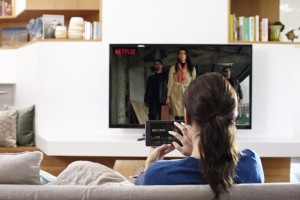
After more than 40 years of operation, DTVE is closing its doors and our website will no longer be updated daily. Thank you for all of your support.
Futuresource: German video market reached €9 billion in 2018
Subscriptions helped to grow German video entertainment spend 6% last year to €9 billion, making Germany the fifth largest video market in the world according to Futuresource stats.
 The research firm said that annual consumer spend in Germany is on course to exceed €10 billion by 2022, with a robust pay TV market, rapid progression of SVOD and a growing acceptance of transactional digital video services fuelling the growth.
The research firm said that annual consumer spend in Germany is on course to exceed €10 billion by 2022, with a robust pay TV market, rapid progression of SVOD and a growing acceptance of transactional digital video services fuelling the growth.
Currently there are more than 10 million German homes subscribing to one or more video-on-demand service, establishing SVOD as a key component of the country’s video market. Futuresource predicts that in 2019 the German VOD market will have doubled in two years and is forecast to exceed €1 billion in 2020.
“Amazon Prime Video remains the market leader, but Netflix continues to make strong gains, with 50% growth of subscriptions in 2018. The two services are mostly complementary and there is room for both to thrive,” said Futuresource market analyst, Tristan Veale.
“Moving forward, we expect multiple subscriptions per household to drive the market and, outside of these two streaming giants, there is a growing number of specialist services available directly, or via aggregators such as Amazon Channels. We also expect major direct-to-customer launches such as Disney+ in the longer term, along with broadcaster-led initiatives in the near term, which will help maintain strong subscription growth.”
According to the Futuresource, Germany has one of the highest levels of smart TV ownership in Europe with household penetration reaching 82% at the end of 2018, making these devices a “springboard” for premium digital video for many viewers.
At the same time, packaged home entertainment – namely DVDs and Blu-rays – accounted for 90% of home entertainment spend in Germany five years ago. The research firm expects this to have dipped to below 50% in 2018 when final year-end figures are confirmed.
“As Amazon Prime and Netflix are two of the most prominent services on television sets, this ownership is clearly translating into uptake, with almost half of German Netflix users watching the service directly on a smart TV. Furthermore, friction free buying or renting movies via services which have apps on the smart TV have been key in driving digital transactions,” said Veale.
Finally, the report notes “increased dynamism” in the German pay TV market, which is growing despite signs of decline or stagnation in other countries. It attributed this to an increased number of providers offering low cost, ‘pay TV lite’ services as an alternative to basic cable plans and premium subscriptions.

